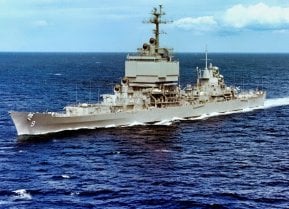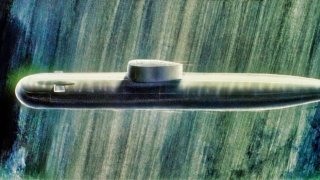Titanium and Turmoil: The Legacy of Russia's K-278 Komsomolets Submarine
The K-278 Komsomolets, the sole Mike-class submarine, was a showcase of Soviet submarine innovation with its titanium hull and record-breaking deep-diving capabilities. However, tragedy would ensure this submarine only entered the history books in a negative way.
Summary: The K-278 Komsomolets, the sole Mike-class submarine, was a showcase of Soviet submarine innovation with its titanium hull and record-breaking deep-diving capabilities. Launched in the late 1970s as a fourth-generation nuclear-powered attack submarine prototype, it achieved a record dive of 3,350 feet in 1984. Equipped with the fast Shkval supercavitating torpedoes and standard torpedo tubes, its design prioritized performance but suffered from inadequate safety measures. Tragically, in 1989, a fire led to severe malfunctions, resulting in the submarine's sinking in the Barents Sea. Despite rescue efforts, most crew members succumbed to hypothermia, marking a somber moment in Cold War history. The Komsomolets' wreckage lies at a depth of 1,680 meters, a silent witness to the era's dangers and the need for stringent safety protocols in submarine operations.
Beneath the Waves: The K-278 Komsomolets and its Cold War Secrets
The only model of its class, the K-278 Komsomolets, or what many refer to as the Mike-class, was intended as a testbed for Soviet fourth-generation submarines. Instead, it emerged as a potent SSN in its own right—albeit one with a deeply tragic fate.
By the late 1960’s, the Soviet Navy was enmeshed in a procurement search for a new design platform to guide the next generation of its nuclear-powered attack submarines. In 1974, Rubin Design Bureau introduced a submarine that seemed to excel by every performance metric that mattered to the Soviet shipbuilding industry. The Project-685 K-278 Komsomolets was known in the west by its North Atlantic Treaty Organization reporting name as the first Mike-class submarine. It was fast, packed a punch, and broke military submarine deep-diving records.
Komsomolets’ inner hull was made from titanium, a 1960’s Soviet design innovation that facilitated greater dive depths and potentially faster speeds. However, titanium is also highly expensive and notoriously difficult to work with, requiring special treatment in argon-infused warehouses. Nonetheless, Komsomolets’ titanium construction allowed it to withstand an impressive 1,500 psi of pressure—in 1984, the submarine reached a then-diving record of 3,350 feet. But Komsomolets’ innovations didn’t stop there. The submarine was armed with secretive Shkval supercavitating torpedoes that employed a novel propulsion system to travel at a maximum speed of up to 200 knots or 370 kilometers per hour. The submarine itself could travel up to thirty knots, a fairly typical speed for flagship Soviet submarine lines, and featured a displacement of up to 8,000 tons. In addition, Komsomolets featured the standard-issue six 533-millimeter torpedo tubes found across numerous other submarine lines.
As technically impressive as the Komsomolets was, it also perpetuated the unfortunate Soviet trend of haphazard radiation safeguards and what is often described as a weak submarine safety culture. Komsomolets was commissioned in 1983 and tasked with running a series of field tests to generate performance data for Soviet scientists and engineers. Disaster struck in 1989. While submerged over 1,000 meters deep in the Sea of Norway, a fire broke in a compartment near Komsomolets’ aft. According to investigations into the incident, a ballast malfunction apparently caused an air rupture that led to an oil leak. The oil then made contact with a running turbine, causing a conflagration that wrought havoc across the submarine’s control systems.
The fire and resulting smoke could not be effectively contained, causing a raft of cascading electrical malfunctions throughout the vessel. Five of the crew, including Captain Evgeny Vanin, attempted to eject through the designated escape pod. Shortly after rising to the surface, the pod catastrophically malfunctioned— only one escaped the hatch, while Captain Vanin and three others were either killed instantly or incapacitated.
Komsomolets surfaced, but compressed air leaks continued to spread the fire. The submarine sank several hours later, sustaining severe structural damage. The government promptly responded by dispatching rescue aircraft, but the effort proved ineffective. Of the sixty-nine-strong crew that had successfully abandoned ship, forty-two proceeded to die from hypothermia in the freezing waters of the Barents Sea.
Komsomolets, or what is left of it, sits on the Barents Sea floor at a depth of 1,680 meters. Recent investigations have found that the site remains radioactive, but the threat of further environmental contamination is reportedly minimal.
Komsomolets’ decaying, irradiated husk remains a grim reminder of the Cold War military competition’s human toll.
About the Author
Mark Episkopos was a national security reporter for the National Interest.


